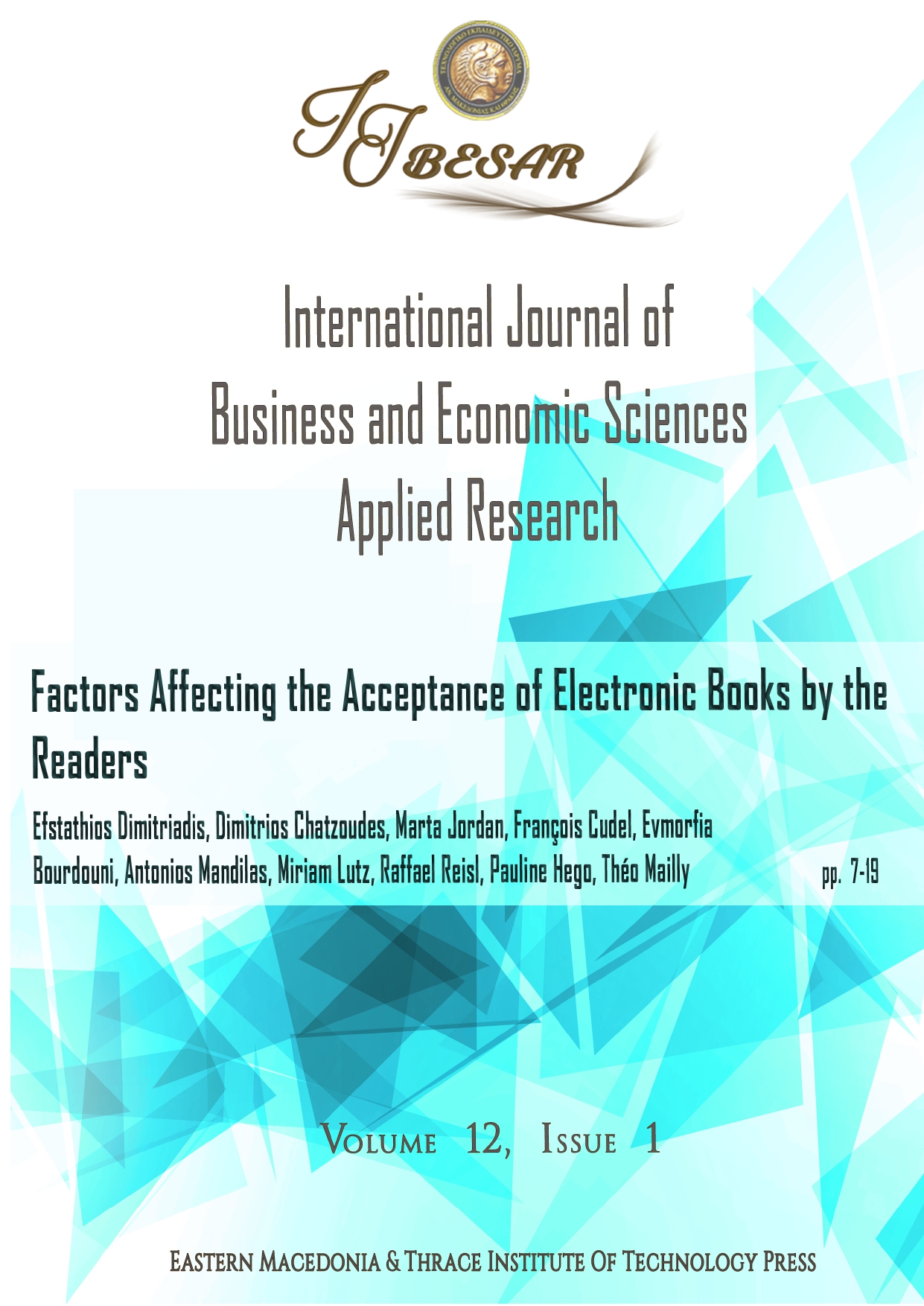Factors Affecting the Acceptance of Electronic Books by the Readers
Factors Affecting the Acceptance of Electronic Books by the Readers
Author(s): Théo Mailly, Pauline Hego, Raffael Reisl, Miriam Lutz, Antonios Mandilas, Evmorfia Bourdouni, François Cudel, Marta Jordan, Dimitrios Chatzoudes, Efstathios DimitriadisSubject(s): Media studies, Post-War period (1950 - 1989), ICT Information and Communications Technologies
Published by: Τεχνολογικό Εκπαιδευτικό Ίδρυμα Ανατολικής Μακεδονίας και Θράκης
Keywords: e-books; e-book adoption; (Enhanced) Technology Acceptance Model (TAM); Intention to use; Empirical study; Structural Equation Modeling (SEM);
Summary/Abstract: Purpose: One of the main questions about the future of print and electronic books is whether the second will replace the first. Although the electronic book was first introduced to the public in 1971, the trend of reading e-books did not gain popularity until the previous decade. The recent introduction of e-book devices has drastically changed the way people access and use the reading content. Therefore, in the present study, the electronic book is examined not only as an innovative technological product, but also as a cultural commodity. More specifically, the present study aims to develop and empirically test a conceptual framework (research model) that sheds fresh light on the factors that affect ebook adoption by the readers. Design/methodology/approach The examination of the proposed conceptual framework was made with the use of a newly-developed structured questionnaire that was distributed to book readers residing in three EU countries. In particular, the participants of the survey were citizens from Austria, France and Greece. The study includes nine research factors. Some of them are dependent (e.g., “perceived usefulness”, “perceived ease of use”, “perceived trust”), while the two main dependent factors of this study are “attitude towards use” and “behavioural intention”. The empirical data were analysed using the “Structural Equation Modelling” (SEM) technique. Findings Empirical results revealed that the factors that have the most significant impact on e-book acceptance, both directly and/or indirectly, are three: “compatibility with the preferred way of reading”, “ease of use” and “attitude towards use”. Also, the results highlighted interesting differences between the three countries of the sample. Research limitations A limitation stemming from the implemented methodology is the use of self-reported scales in order to measure the constructs of the proposed model. Also, the paper lacks a longitudinal approach, since it provides a static picture of e-book acceptance (first quarter of 2019). Originality/value It is of great significance that everyone who has a stake in the adoption of e-books by the readers, understands which factors are the most significant. In that way, the publishing houses, the e-reader manufacturers and the software developers, will be able to approach their consumers more effectively. The present study offers guidelines to these organisations, thus enhancing their understanding about the perceptions of their customers. Moreover, the present study is conducted on a European level (sample from three EU countries), something that has never been attempted before in the relevant literature.
Journal: International Journal of Business and Economic Sciences Applied Research (IJBESAR)
- Issue Year: 12/2019
- Issue No: 1
- Page Range: 7-19
- Page Count: 13
- Language: English

